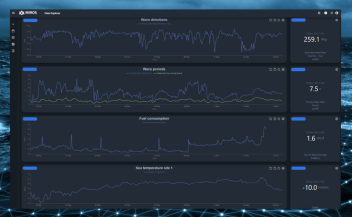Wave & Current Radar
The well-proven Wave & Current radar is the first wave buoy-replacing, dry-mounted sensor providing accurate and maintenance-free sea state measurements empowering the oil and gas industry as well as the ports & coastal community to make decisions based on real-time ocean surface information.
The sensor is a reliable tool for the robust measurement of directional wave estimates including spectra and surface currents.
Read more ↓




Developed for sea state monitoring
The Wave & Current Radar (SM-050) is especially developed for sea state monitoring which makes it superior to x-band-based wave monitoring systems.
It is the only sensor in the world utilizing a dual footprint pulse Doppler method for wave measurements and a microwave dual frequency method.
Wave & Current Rader provides you with noticeable budget savings compared to a wave buoy. As a dry-mounted sensor, it doesn’t require regular maintenance on location and therewith associated costs of a buoy. Instead, you can expect a continuous stream of quality data, easily accessible and available anytime and anywhere.
As a plug-and-play technology, it requires only power and an internet connection to give secure access to immediate, real-time data about the ocean state.
Why Wave & Current Radar?
It is the only sensor in the world utilizing a dual footprint pulse Doppler method for wave measurements and a microwave dual frequency method.
As no parts are submerged in water and the sensor is not impacted by fog, rain or mist, the level of maintenance is an absolute minimum. The sensor calibrates automatically, it only needs power and an internet connection to start delivering real-time sea state data.
The sensor measures accurately whether mounted on fixed or floating installations.
Data Analysts: Data Explorer is a great tool for data analysts who want to dive deep into their data and discover meaningful insights. With Data Explorer’s powerful querying and visualization features, you can quickly identify patterns and trends in your data that might otherwise be difficult to spot.
Operations teams: Can use Data Explorer to gain a better understanding of their operations and make data-driven decisions.
Site managers: With the ability to analyse data from multiple sources, Data Explorer can help site managers to identify opportunities for optimising their processes and reach their operational targets.
Who can benefit?


